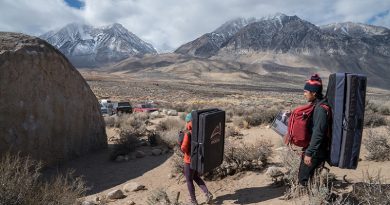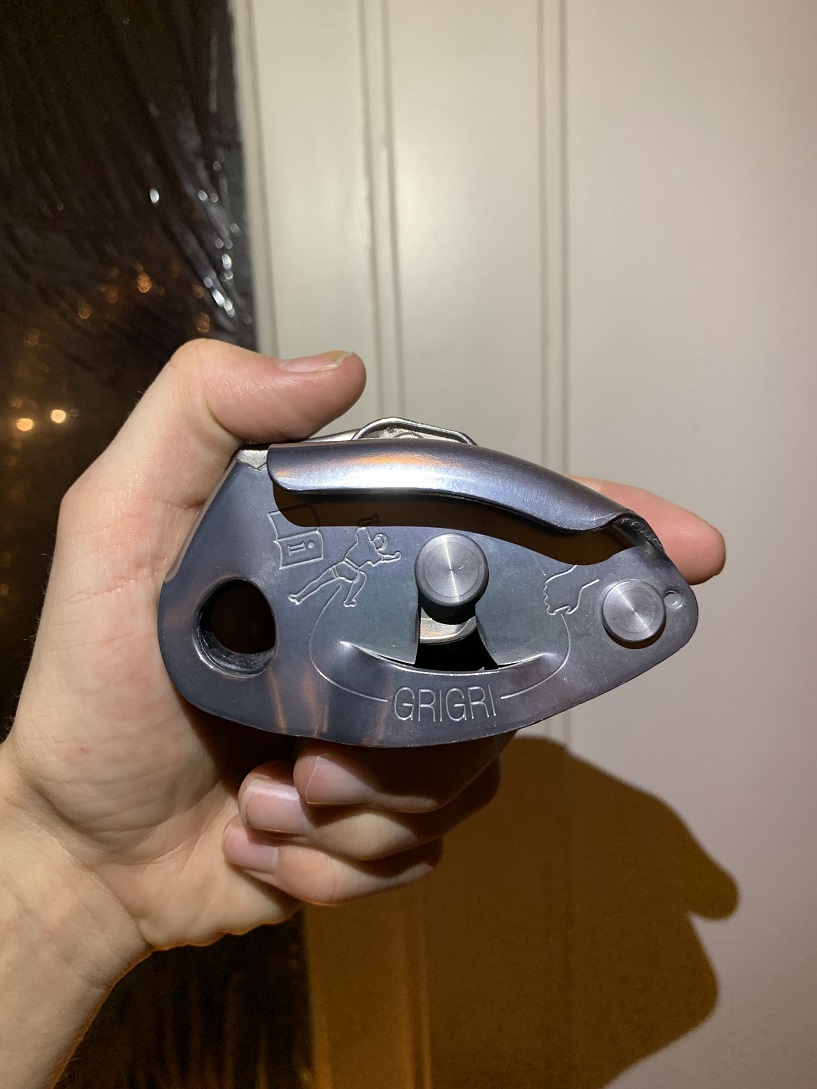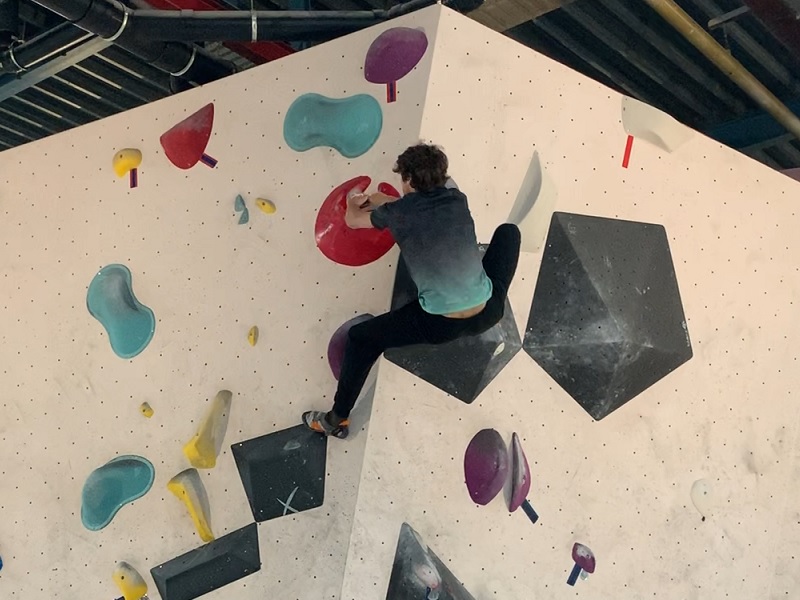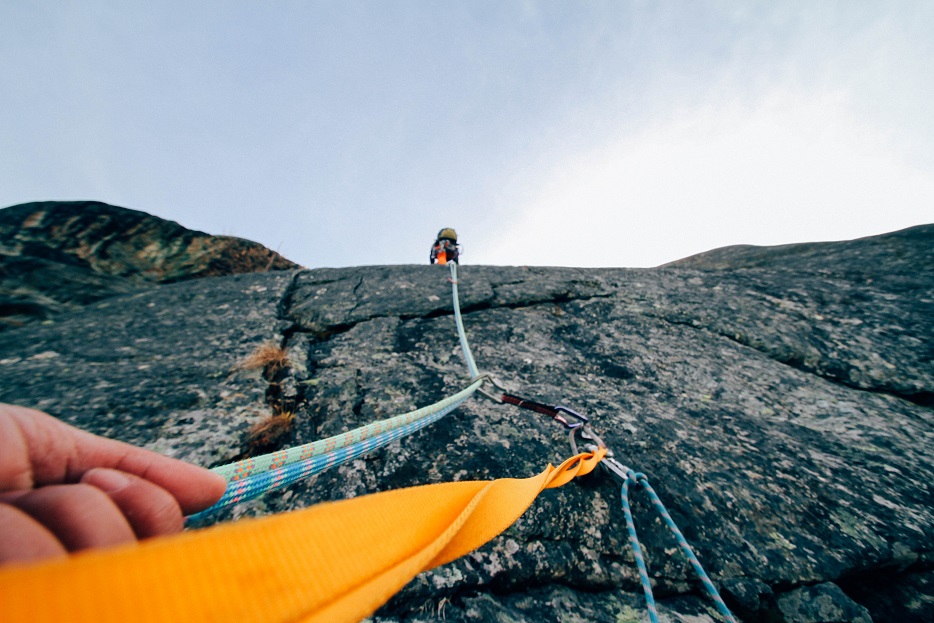There comes a point in every climb where we come to face our fate.
It’s the arch nemesis of every climber: pump.
So what is climbers pump exactly? It’s the annoying, throbbing feeling in our forearms which prevents us from holding on longer, no matter how far our motivation to send the climb goes. It’s caused by more blood flowing into your forearms than can leave, and lactate building up as a result of it, causing fatigue.
Luckily, however, not all hope is lost!
In this article, we’ll go over the many different ways in which you can stop getting pumped from ruining your climbing achievements.
We’ve cut this article in two different sections:
- How to prepare against getting pumped
- How to reduce pump during climbing specifically
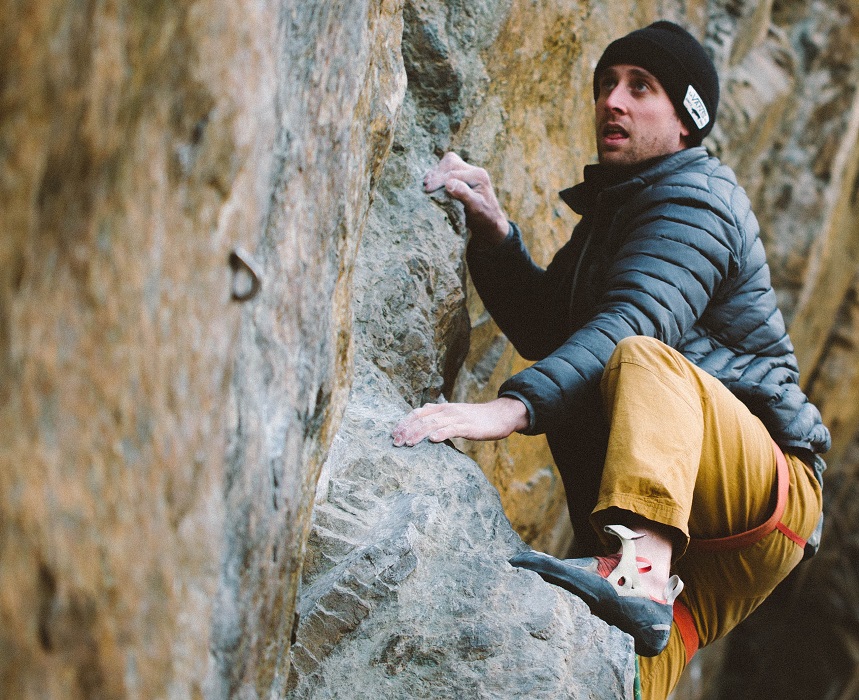
How to prepare against getting pumped
Preparation is key when it comes to avoiding pump.
There’s a couple of things you can do to prolong the time it takes to get pumped while climbing. Some of these preparations boil down to eating properly and making sure you have the right nutrients, while other tips to prevent pump are about pre workout exercises.
1. Hydrate
Dehydration results in a significantly lower power output compared to a hydrated state, while dehydration also builds lactate sooner (the so called lactate threshold) and causes exhaustion, this study suggests.
So make sure you’re properly hydrated before you start your climb! If possible, take sips of water during your climbing too. This helps you to stay hydrated for climbs that take several hours to complete.
2. Breathe
Your body gets its energy from breaking down glucose. This process uses oxygen, which enters your body by, you’ve guessed it, breathing.
If there’s not enough oxygen in the body locally, the body can still break down glucose, luckily. Without the use of oxygen, however, it starts to produce lactate in a process called ‘anaerobic glucose breakdown’. It’s this lactate that builds up in the muscles and gets your forearms so pumped.
Logically, raising the amount of oxygen in your body postpones your lactate threshold from kicking in, and thus makes sure you can climb longer without getting pumped.
Tip: What I like to do, is take a couple of deep, long breaths before I start my climb.
Making sure I keep breathing while climbing also helps to prevent lactate building up. Especially during rests on the wall, it pays off to focus on proper breathing technique.
3. Take a rest day once a week
If you’re anything like me, you want to be out there climbing everyday.
While it’s okay to climb almost every day, you’ll need at least one day of rest each week for your muscles to fully recover.
Of course, pump mainly occurs in our forearms, so if you really can’t help yourself and want to work on your overall fitness, it’s acceptable to do some minor cardio workouts that don’t involve the arms during your rest day.
4. Keep your magnesium levels up
A friend of mine at the climbing gym and myself have been taking magnesium supplements for a while now. We’re fans so far.
We’ve a couple of reasons for doing so.
First, we had heard rumors at the climbing gym that magnesium reduces lactate buildup, which, as we know, is the cause of pump. Another friend of mine who is a personal trainer also suggested I should try it. So I did some research and it turns out there’s indeed studies like this one that support this hypothesis about magnesium helping reduce pump. I’m a bit skeptical about the sample size, but at least i can say that in my own experience it does seem to help.
Secondly, magnesium also helps relax your muscles. This is one of the reasons magnesium is also used as a sleep aid. But relaxing your muscles while climbing also helps prevent pump, as we will see later in this article.
Lastly, magnesium is simply an important element for your body. Our body uses it in our bones and in about 300 enzymes, and it’s the fourth most occuring mineral in the human body. We like to keep it that way!
Don’t dip your tongue in your chalk bag by the way (as I was tempted to do when I first heard about this); that’s a different kind of magnesium.
5. Eat green leafy vegetables, beans and nuts
If you don’t want to go the supplement route, I fully understand.
A healthy diet is crucial for any person, especially climbers that take climbing seriously.
If you want to get your magnesium directly out of food sources, try eating more leafy vegetables, beans and nuts. They’re all great sources of magnesium and can ultimately help you climb longer without experiencing pump.
Tip: Eat kale, avocado, kidney beans or chickpeas. All of them can provide you the magnesium that your body needs.
6. Warm up: Get your heart pumping instead of your forearms!
We don’t want our forearms pumping!
And to do so…
We get our heart to pump even harder!
We’ve already established that oxygen in your body helps prevent pump, and as you know our heart pumps the blood that carries oxygen
throughout our bodies.
So it makes sense to make sure your blood is flowing nicely before you start a long climb where pump seems to be immanent.
One way I like to warm up for climbing specifically, is to alternate between jumping ropes, and the following exercise:
Swing your left arm to the right and your right arm to the left simultaneously, and then reverse this movement. Repeat.
While swinging your arms horizontally continuously, extend your fingers, and then squeeze them. This not only warms up your arms, but your hands too, which helps prevent injuries.
I do this for about 5 minutes. I stretch my legs or shake them loose while swinging my arms and warming up my shoulders, arms and hands.
Doing some warm up yoga for climbers is a great way to start your climbing session as well.
7. Stretch
- Improves blood flow
- Oxygenises your muscles
I’ve started to stretch every morning. It’s hard to quantify how this contributes to me getting less pumped during my sessions, but at least it’s a nice ritual to have that makes me feel great!
It is, however, provably good to stretch right before your workout (and after). This loosens up your muscles and tendons, which in turns makes room for blood to flow more freely through your arms and entire body.
That helps your blood to rush the required nutrients to your muscles, as well as helping it to flush out the lactate.
How to reduce pump during climbing specifically
Now let’s dive into what you can do during the climb to avoid or diminish the pump in your forearms.
8. Relax your grip
Continuously squeezing your hands as much as you can, will ultimately swell the muscles in your forearms so badly, that it comes to the point where very little blood can flow through your arms.
Try holding on to the ledges and holds with exactly the amount of pressure that is required not to fall off, and don’t overdo it.
You’ll notice that it will take a lot longer for the pump to finally set in once you properly relax during your climbs.
Not only does it prevent lactate from building up, it also gives your body the opportunity to transfer the lactate away from your forearms.
9. Stretched arms
Beginners quickly learn that they should climb with stretched arms as much as possible, and with good reason.
When you’re hanging onto a hold, bending your arms the slightest quickly starts to use a lot of muscle power. When it comes to avoiding pump in climbing, climbing with stretched arms is one of the most efficient ways to prevent pump.
Get into the habit of returning to a position with stretched rather than bent arms. Every muscle that you don’t have to use is one muscle less that produces lactate.
10. Find kneebars
This one is the holy grail of avoiding pump in climbing.
It can be a true lifesafer (quite literally so when we’re talking free soloing…. Which I do not encourage you to do, by the way.).
Anyway, kneebars enable you to fully take your arms of the wall and give them the rest they need. learning how to find good kneebar spots will vastly improve the longevity of your climbs and can turn a beginning climber in a seasoned multi pitcher.
11. Shake it like a Polaroid picture
The feeling of shaking your arms after a hard climb pretty much speaks for itself.
It’s great.
One of the reasons this works so well against pump is that it gives your body the opportunity to let blood flow to your forearms again.
When you’re climbing, your arms are above your head most of the time. Letting gravity do its work by letting your arms hang and shake them out a little bit is a great way to get the oxygen back to the muscles in your arms that are craving for it.
Besides, there’s simply something really cool about watching climbers shake their arms while latching onto an overhang. Be cool and shake it out good!
12. Find your pace
The trick here is to find the pace where you are climbing efficiently and rather quickly, while staying under the threshold of where your arms get so deprived of oxygen that the anaerobic process starts which builds lactate.
How fast you can climb, completely depends on you; how well trained you are; how good your climbing technique is, and what your genetics determine. By climbing a lot, you’ll find your pace eventually.
13. Massage / knead your forearms when resting on the wall
You can actually physically help your body get rid of the lactate that’s been built up in your forearms.
I’m talking rubbing, kneading, and punching your throbbing forearms.
If you don’t believe me, listen to Sasha DiGiulian:
“One thing that I’ve learned in competition climbing, is to use your body parts to, like, massage out the pump in your forearms.”
Pushing your forearms against your knees and rotating them on it, can speed up the removal of lactate. Go try it out yourself!
14. Climb more often!
Our last advice is to simply climb more often.
Your body will get used to climbing and your physiology will change if you climb a lot.
Every climber remembers the soreness in their muscles the day after they first went climbing.
Every climber thought that was a fact of life all climbers have to deal with.
But nothing can be further from the truth. The more you climb, the less often you will experience pump. Soon, you’ll start to have climbing sessions which don’t result in pump.
I hope that this article has helped you to bring your pump deprived climbing days a little bit closer. Good luck!



